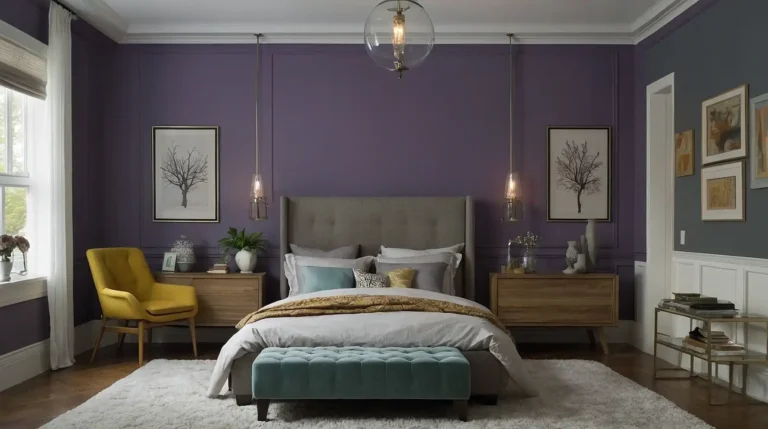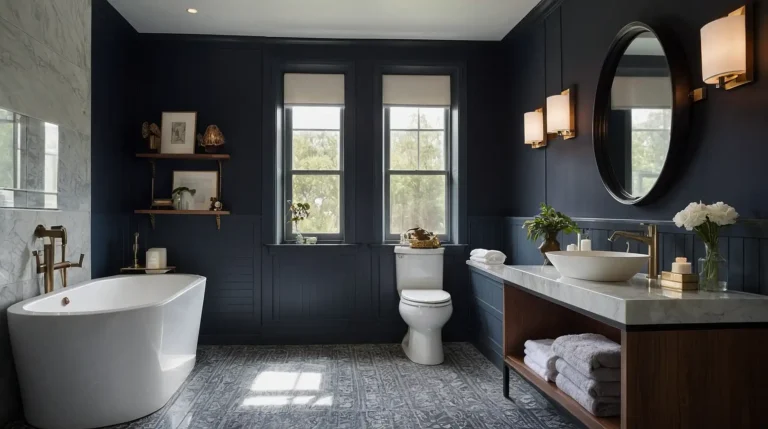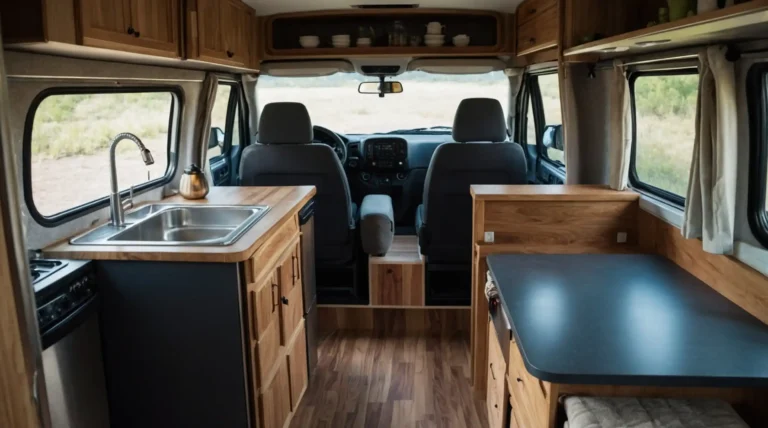27 Tiny House Campers Inspirations and Ideas
Tiny house campers offer the perfect blend of minimalist living and travel freedom that appeals to adventure seekers everywhere.
These mobile homes combine clever design with wanderlust to create spaces that feel surprisingly spacious and comfortable.
You can design rolling sanctuaries that include all essential amenities while maintaining the mobility to explore new destinations constantly.
Smart storage, multi-functional furniture, and innovative layouts maximize every square inch effectively.
These ideas will inspire your tiny house camper design while solving common space and comfort challenges.
1: Design a Murphy Bed with Daytime Seating
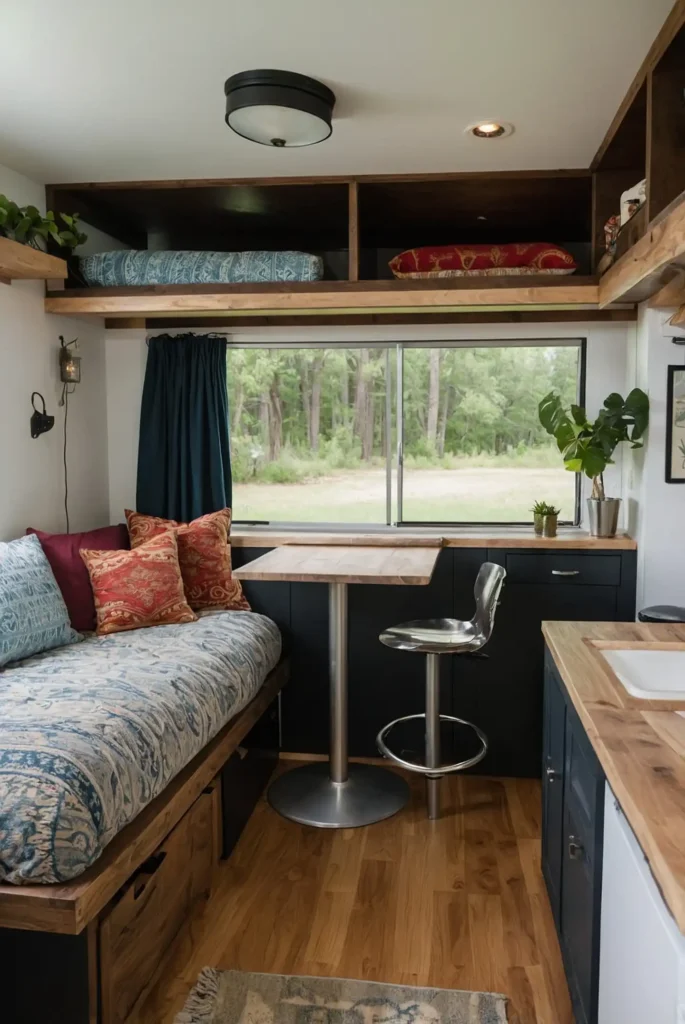
Install a wall-mounted bed that folds up during the day to reveal comfortable seating underneath.
You’ll maximize your living space while maintaining both sleeping and socializing areas efficiently.
Choose quality hardware that supports your weight safely and operates smoothly.
Add cushions and pillows that work for both sleeping and seating configurations.
Your camper gains flexible space that adapts to different daily activities while maintaining comfort for both rest and entertainment.
2: Create a Slide-Out Kitchen Extension
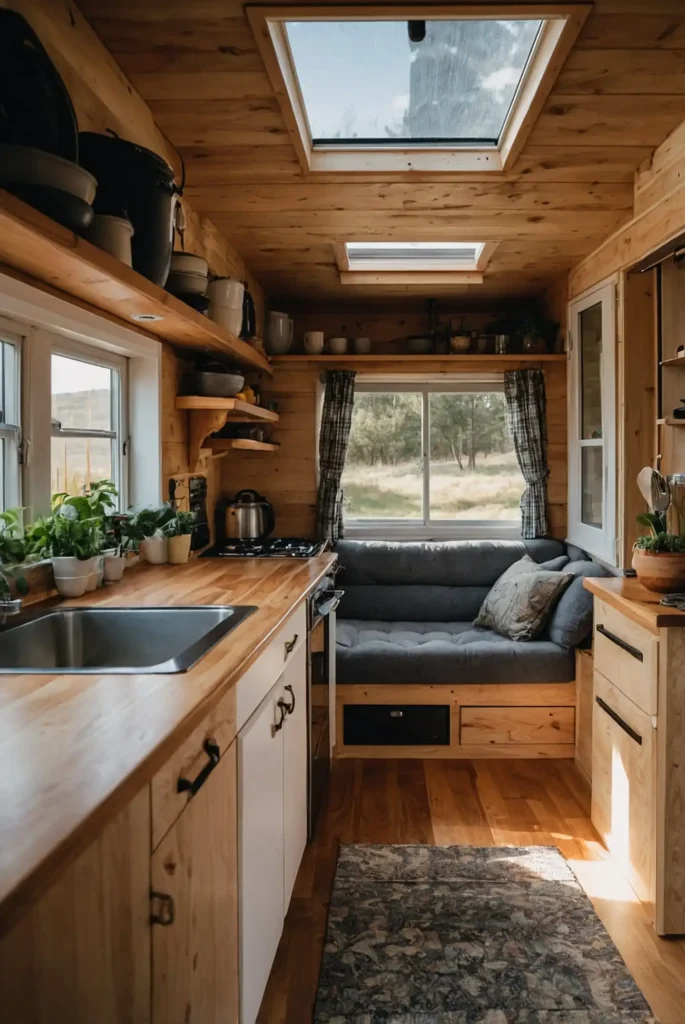
Build kitchen counters that slide out from your camper’s exterior wall to double your food preparation space instantly.
You’ll gain significant workspace while keeping indoor areas uncluttered during cooking.
Include cutting boards, storage, and prep surfaces that integrate seamlessly with your interior kitchen.
Add weather protection for outdoor cooking comfort.
Your kitchen becomes more functional with expanded workspace that makes meal preparation easier while maintaining compact interior design.
3: Install a Rooftop Deck with Ladder Access

Add a secure rooftop platform with railings and ladder access for outdoor relaxation and scenic viewing.
You’ll create additional living space that doesn’t increase your camper’s footprint.
Include weather-resistant decking materials and safety features like non-slip surfaces.
Plan for furniture storage and weather protection when not in use.
Your tiny house gains elevated outdoor living space perfect for stargazing, dining, or simply enjoying panoramic views from any location.
4: Build Under-Stair Storage Compartments
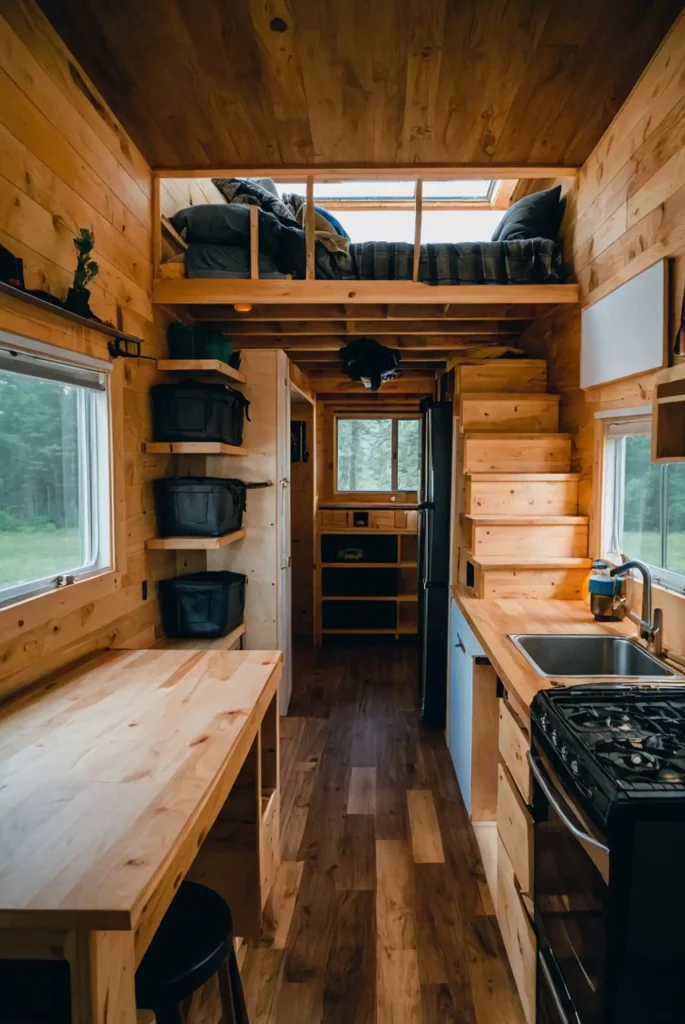
Maximize every inch under stairways with custom-built storage compartments for clothes, supplies, and equipment.
You’ll eliminate wasted space while maintaining organized living areas.
Design pull-out drawers, shelving, and hanging areas that accommodate different item sizes.
Include easy-access hardware and moisture protection for stored items.
Your stairs become productive storage areas that keep belongings organized while maintaining clear pathways and uncluttered living spaces.
5: Design a Convertible Dining Table Workspace
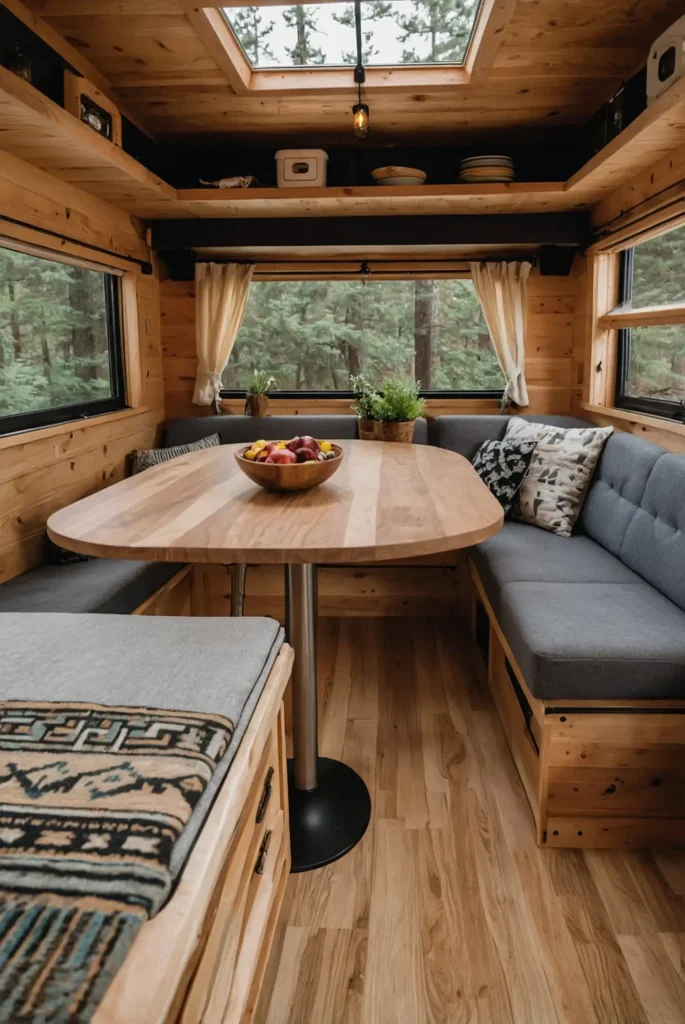
Create tables that adjust height and position to serve as both dining surfaces and work desks.
You’ll accommodate different activities without requiring separate furniture pieces.
Include adjustable legs, folding leaves, and storage for work supplies.
Plan adequate lighting and power outlets for laptop and device use.
Your dining area becomes a productive workspace that adapts to remote work needs while maintaining comfortable dining for meals.
6: Install Fold-Down Exterior Awning
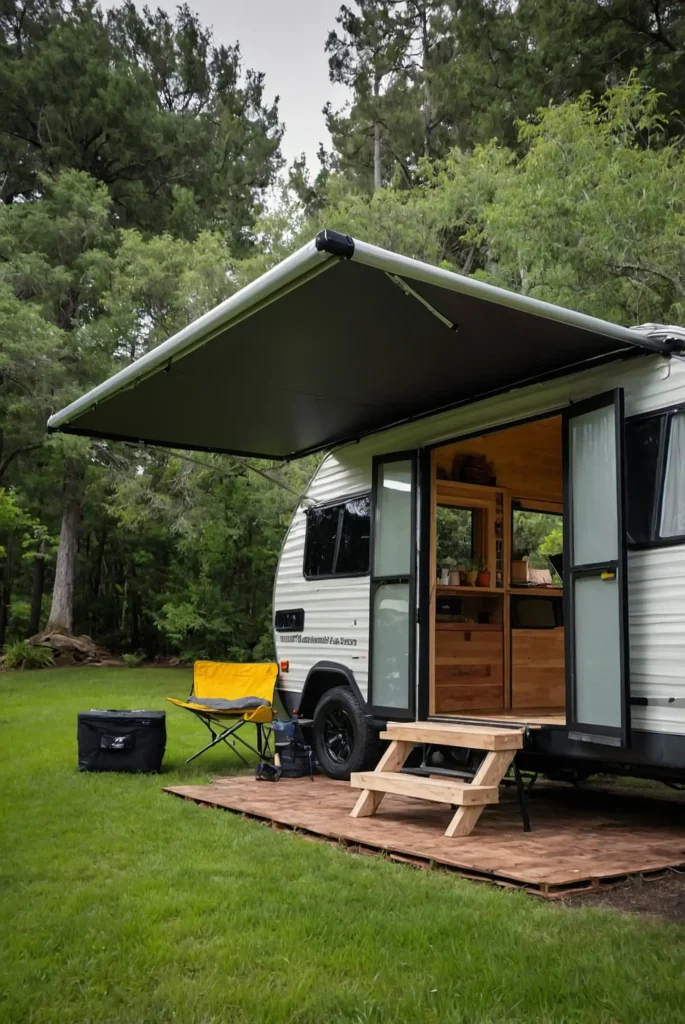
Add retractable awnings that create shaded outdoor living areas beside your camper for expanded entertainment space.
You’ll gain weather-protected outdoor rooms that significantly increase usable area.
Choose motorized or manual options based on your budget and convenience preferences.
Include LED lighting and optional sidewalls for weather protection.
Your camper gains substantial outdoor living space that provides shade and weather protection while creating comfortable areas for relaxation.
7: Create a Wet Bath with Shower-Toilet Combo
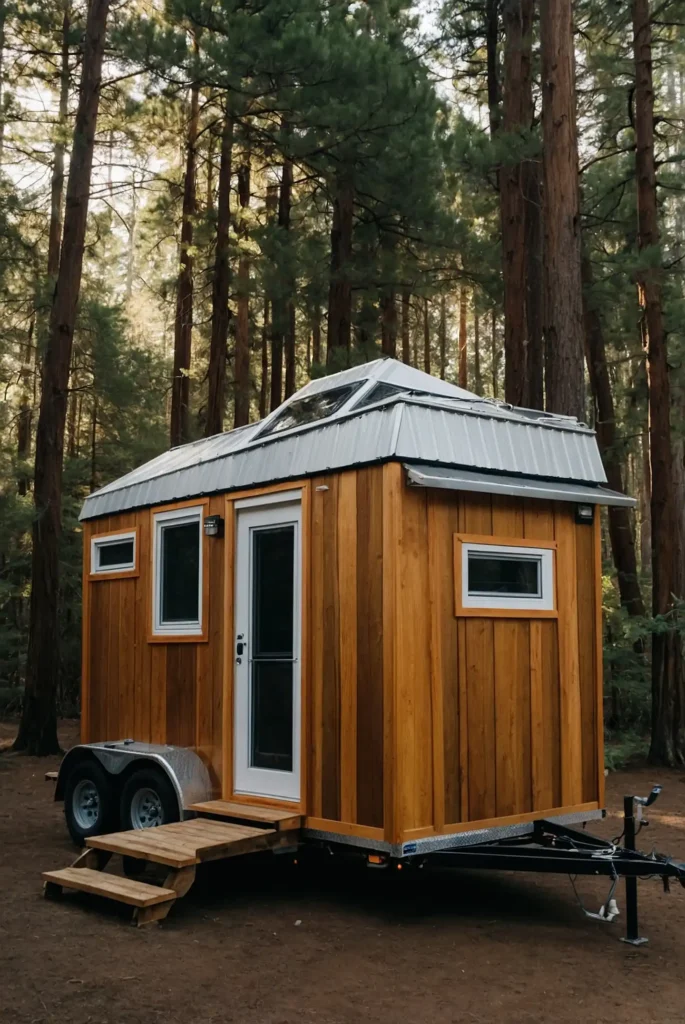
Design compact bathrooms where shower areas double as toilet spaces to maximize efficiency in minimal square footage.
You’ll maintain full bathroom functionality while conserving precious interior space.
Include proper ventilation, waterproof surfaces, and folding fixtures that create more room when not in use.
Plan drainage carefully for optimal function.
Your bathroom becomes surprisingly spacious while maintaining all essential functions through clever dual-purpose design and space-saving fixtures.
8: Build a Garage Underneath for Storage
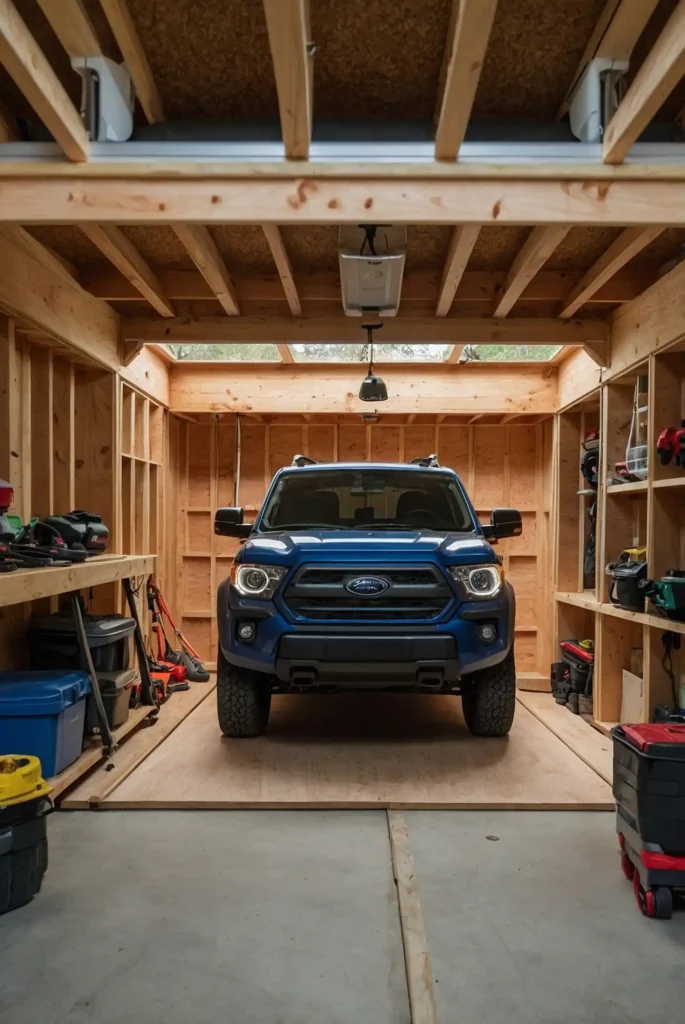
Design storage compartments under your camper’s floor for outdoor gear, tools, and seasonal equipment.
You’ll maintain interior living space while securing essential travel and adventure equipment.
Include weatherproof access panels and organization systems for different equipment types.
Plan for weight distribution and road clearance requirements.
Your camper gains substantial storage capacity without sacrificing interior comfort while keeping adventure gear organized and accessible.
9: Install Solar Power System with Battery Bank
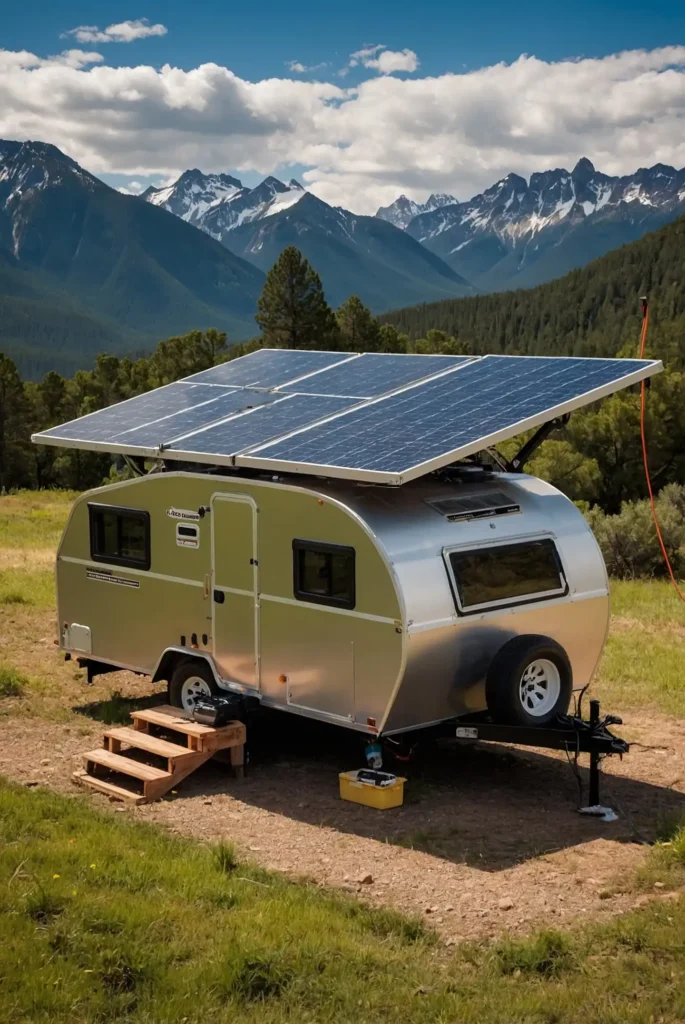
Add comprehensive solar panels with battery storage for off-grid power independence that enables extended wilderness camping.
You’ll reduce reliance on hookups while maintaining modern conveniences.
Include inverters, charge controllers, and monitoring systems for optimal performance.
Plan power usage carefully to match your generation and storage capacity.
Your tiny house becomes energy independent while supporting modern devices and appliances through renewable power generation and storage.
10: Design a Loft Bedroom with Skylights
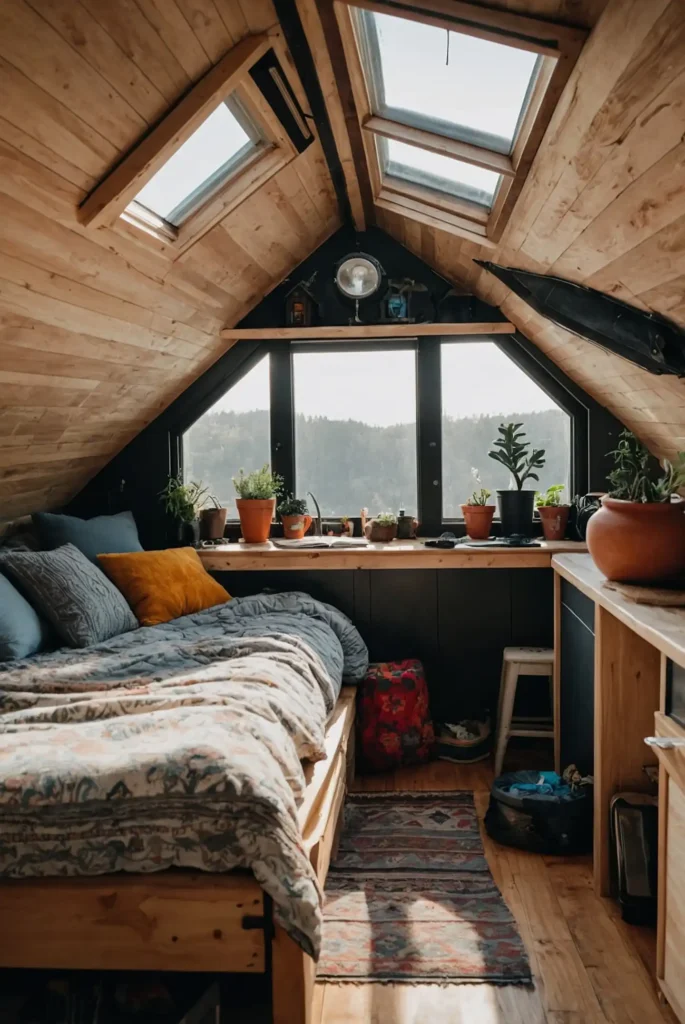
Create elevated sleeping areas with overhead windows that provide natural light and stargazing opportunities.
You’ll maximize floor space while creating dreamy sleeping environments.
Include proper ventilation, blackout options, and comfortable access stairs or ladders.
Plan ceiling height carefully for comfortable sleeping and sitting.
Your bedroom becomes a cozy retreat with natural light while freeing main floor space for living and dining activities.
11: Create Modular Furniture Systems
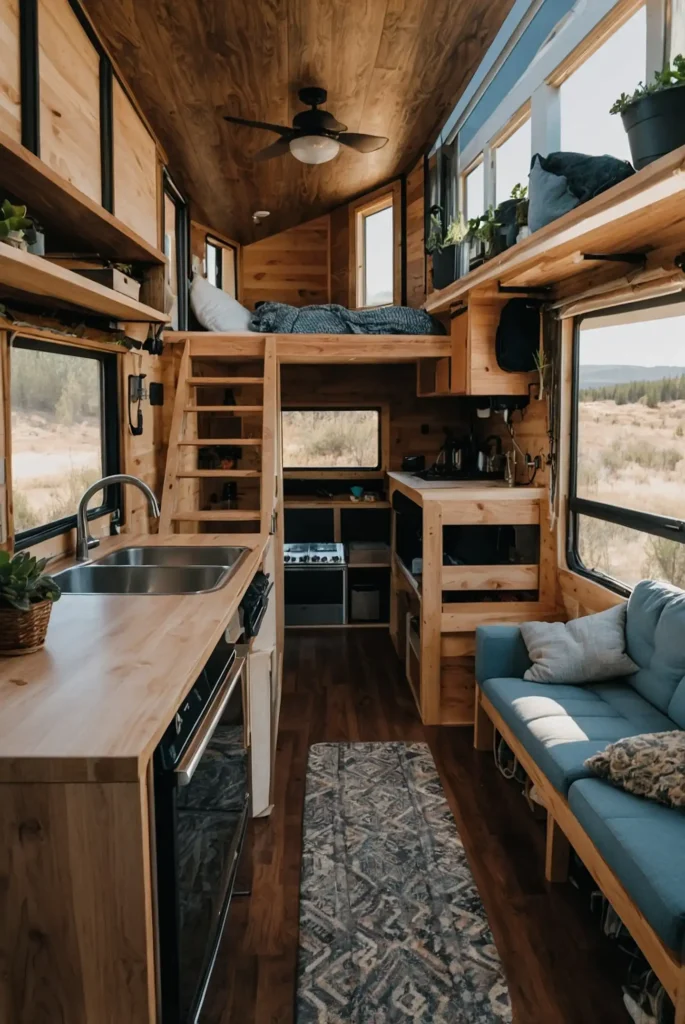
Build furniture pieces that stack, nest, and reconfigure for different activities and space needs.
You’ll maintain flexibility while keeping your camper functional for various lifestyle requirements.
Choose lightweight materials and secure connection systems that prevent shifting during travel.
Include storage within modular pieces for maximum efficiency.
Your furniture adapts to changing needs while maintaining stability and comfort through thoughtful modular design and construction.
12: Install a Composting Toilet System
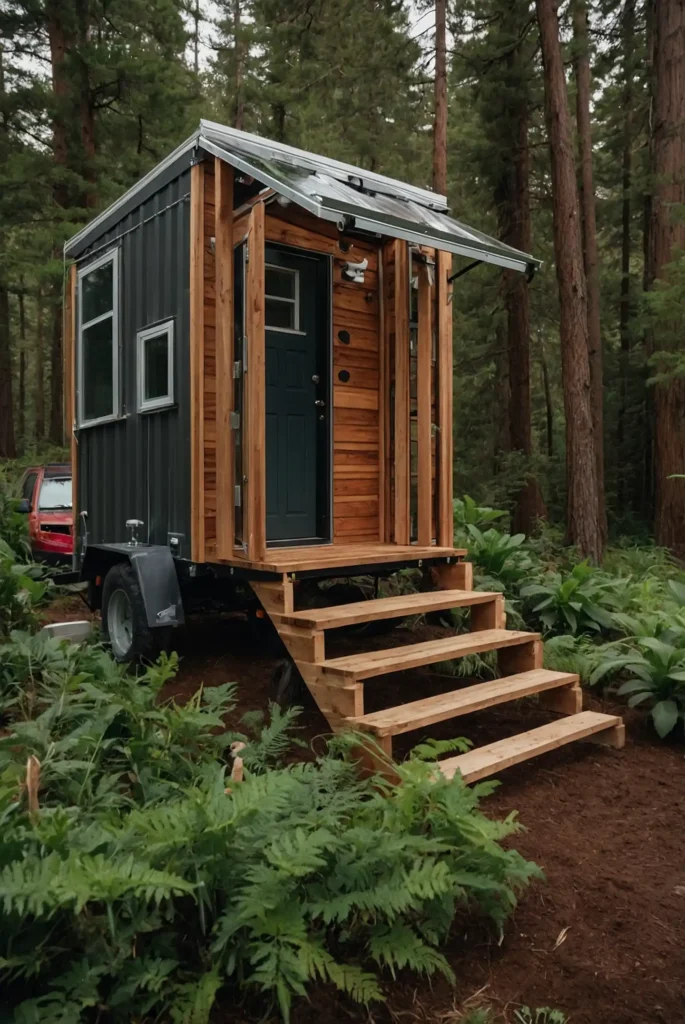
Add waterless toilet systems that eliminate black water tanks while providing eco-friendly waste management.
You’ll simplify maintenance while reducing environmental impact significantly.
Choose models appropriate for your usage patterns and include proper ventilation for odor control. Plan for composting material storage and disposal.
Your bathroom becomes more sustainable while eliminating complex plumbing and tank maintenance requirements through natural waste processing systems.
13: Design a Pull-Out Pantry System
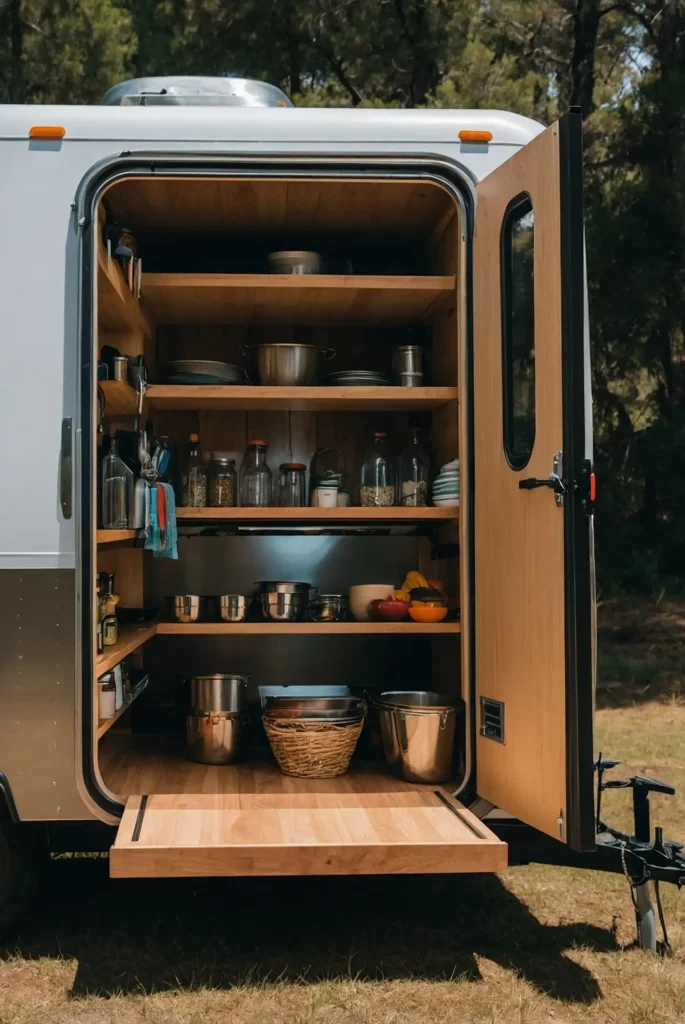
Create narrow pantry cabinets that slide out completely for full access to stored food and supplies.
You’ll maximize storage efficiency while maintaining easy access to essentials.
Include adjustable shelving and secure latching systems that prevent shifting during travel.
Plan for different container sizes and food storage needs.
Your kitchen storage becomes more organized and accessible while utilizing narrow spaces that might otherwise remain unused effectively.
14: Build a Fold-Out Outdoor Kitchen
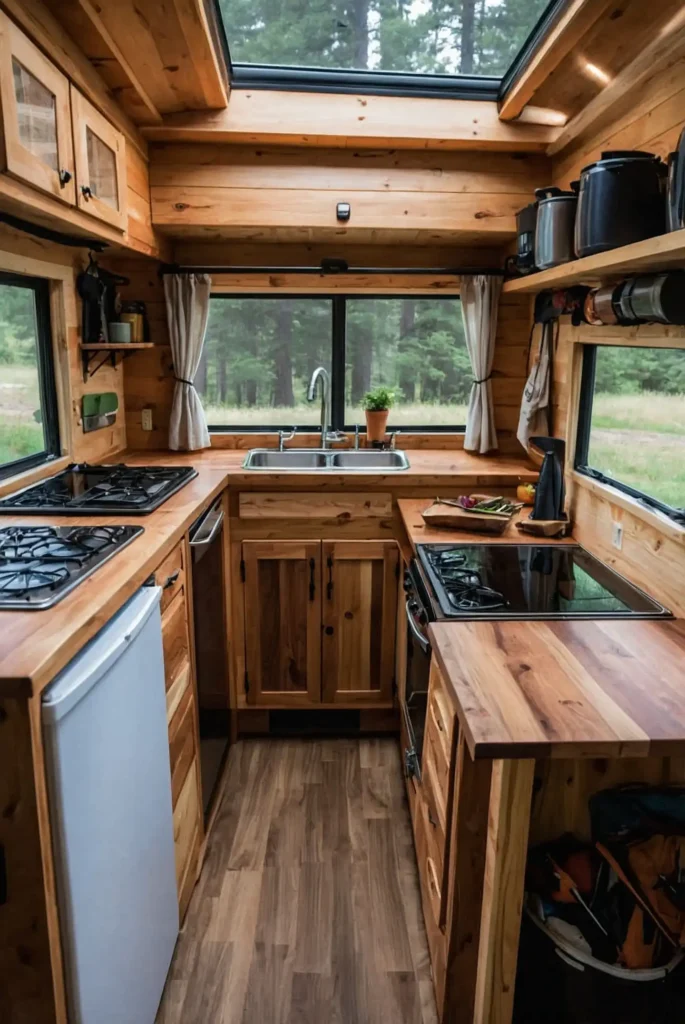
Install exterior cooking stations that fold out from your camper’s exterior wall for comprehensive outdoor meal preparation.
You’ll create full kitchen functionality while keeping cooking odors outside.
Include burners, prep surfaces, and storage that integrate with your interior kitchen systems.
Add wind screens and lighting for cooking comfort.
Your outdoor cooking capabilities expand dramatically while maintaining interior air quality and creating enjoyable outdoor cooking experiences.
15: Create a Reading Nook with Storage
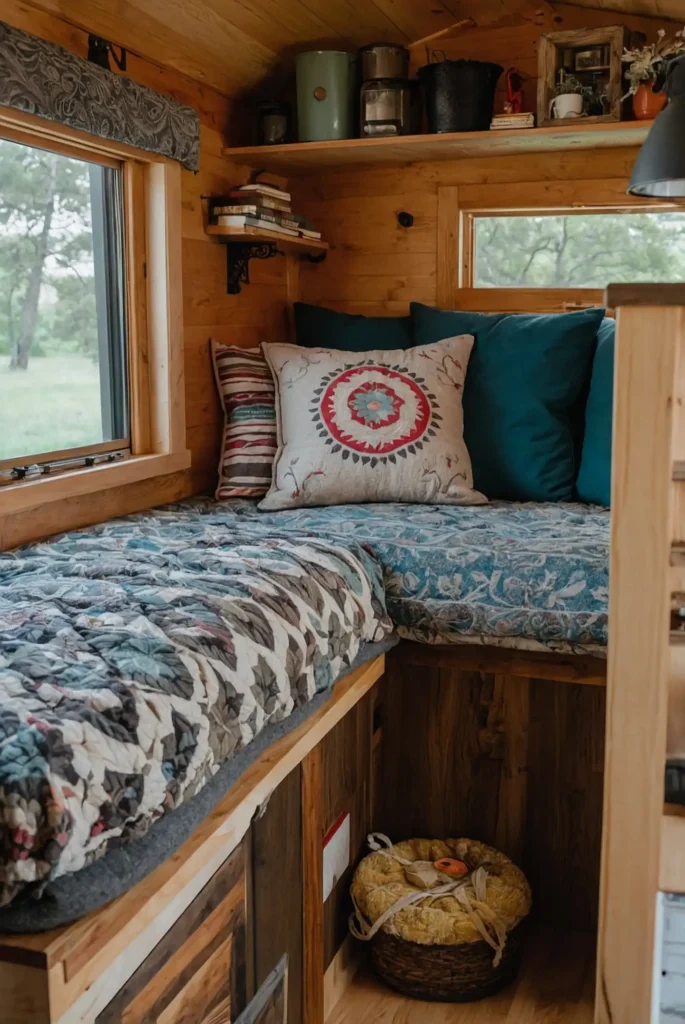
Design cozy window seats with built-in storage underneath for books, blankets, and personal items.
You’ll create peaceful retreats while maximizing storage in comfortable seating areas.
Include good lighting, comfortable cushions, and easy access to stored items. Plan window placement for natural light and scenic views.
Your camper gains peaceful reading spaces that encourage relaxation while providing practical storage for comfort items and entertainment.
16: Install a Ceiling-Mounted Bike Rack
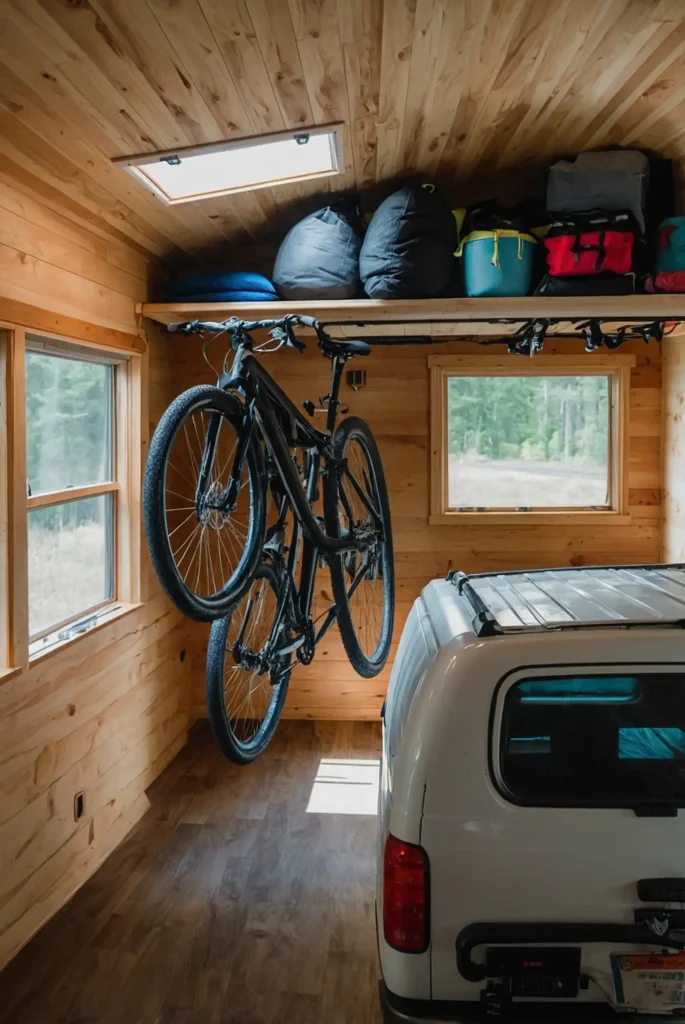
Add overhead bike storage that keeps bicycles secure during travel while maintaining floor space for living activities.
You’ll transport adventure equipment without sacrificing interior comfort.
Choose racks that distribute weight properly and include secure tie-down systems.
Plan for easy loading and unloading without damaging interior finishes.
Your camper accommodates active lifestyle equipment while maintaining comfortable living space through elevated storage solutions that maximize floor area.
17: Design a Swivel Television Mount
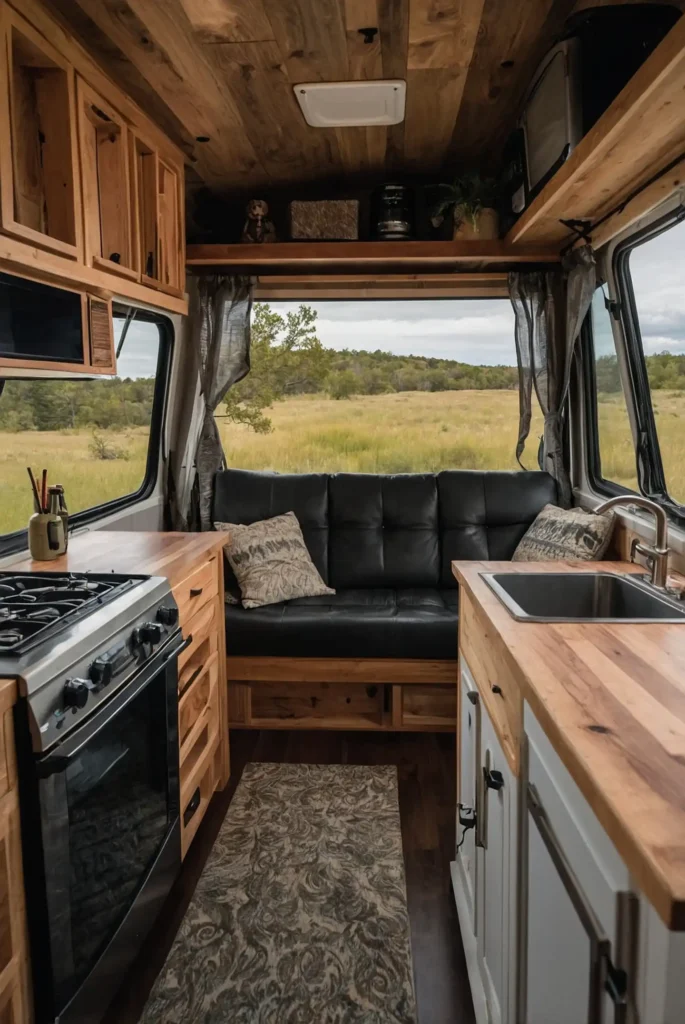
Install TV mounts that rotate to face different seating areas for optimal viewing from various positions.
You’ll maximize entertainment flexibility while maintaining compact electronic storage.
Include cable management and stable mounting that prevents movement during travel. Plan viewing angles from different seating and sleeping areas.
Your entertainment system becomes more versatile while maintaining stable mounting that adapts to different relaxation and socializing configurations.
18: Create a Gear Drying System
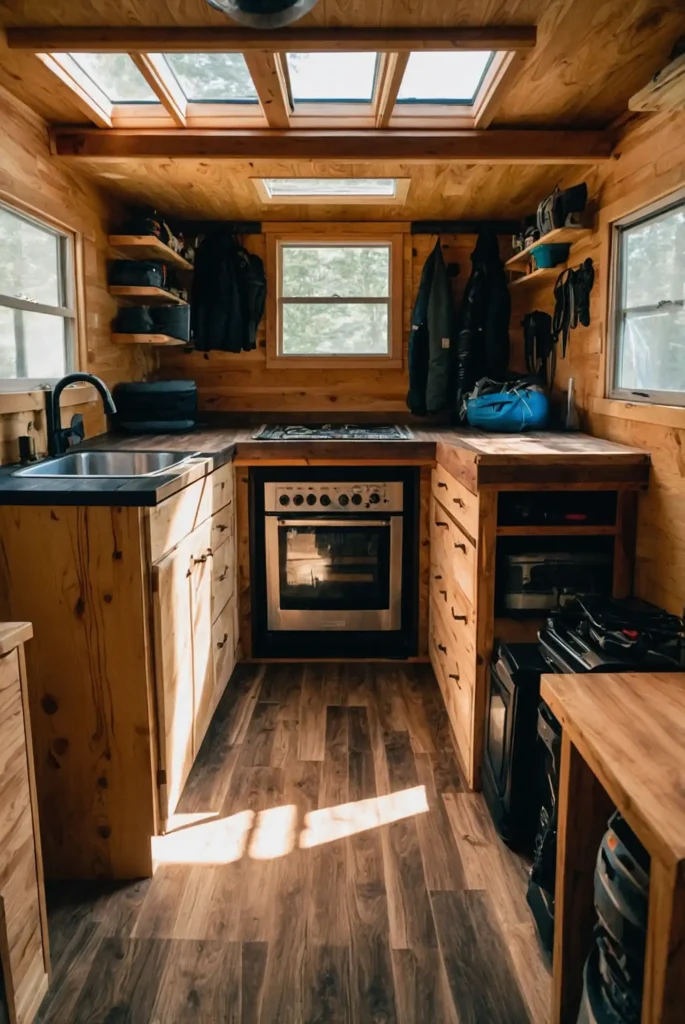
Install retractable clotheslines or drying racks that accommodate wet outdoor gear without cluttering living spaces.
You’ll maintain dry, comfortable interiors while caring for adventure equipment properly.
Include ventilation systems that promote quick drying while preventing moisture damage to interior materials.
Plan for different gear sizes and types.
Your camper maintains dry, comfortable conditions while accommodating outdoor adventure gear that requires proper drying and maintenance.
19: Build a Slide-Out Wardrobe System
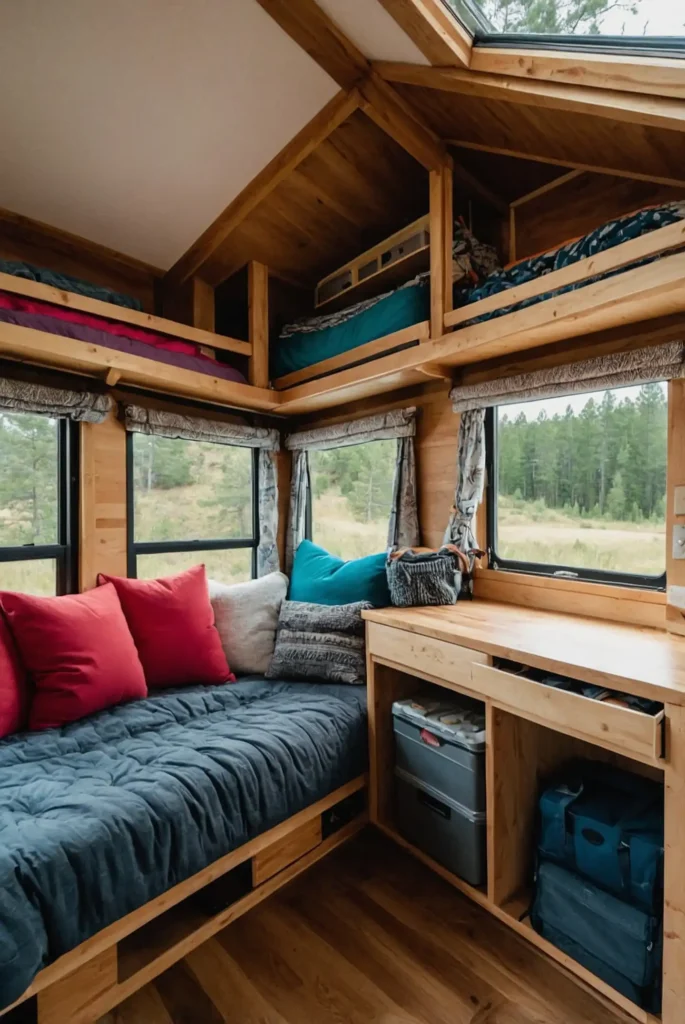
Design closet storage that extends outside your camper for full access to clothing while conserving interior space.
You’ll maintain organized clothing storage without sacrificing living area.
Include weather protection and secure mounting systems that operate smoothly. Plan for different clothing types and seasonal storage needs.
Your clothing storage becomes more accessible and organized while freeing interior space for other essential living functions.
20: Install a Graywater Recycling System
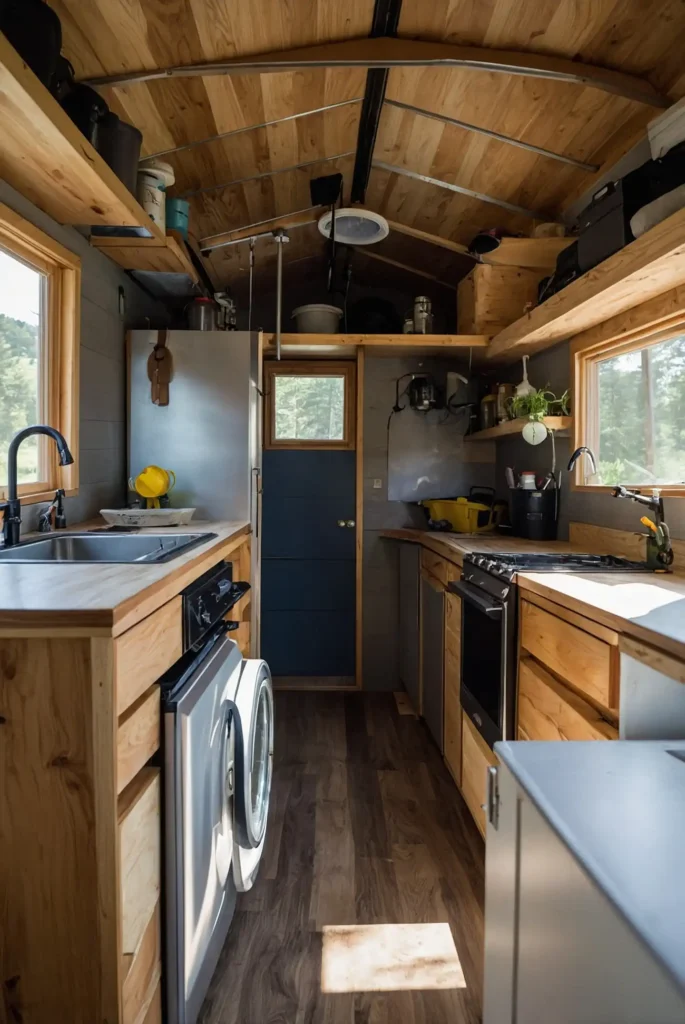
Add water filtration systems that reuse sink and shower water for toilet flushing or outdoor use.
You’ll extend water supplies while reducing environmental impact significantly.
Include appropriate filtration and storage systems that meet health and safety requirements.
Plan for maintenance and filter replacement schedules.
Your water management becomes more sustainable while extending off-grid capabilities through efficient water reuse and conservation systems.
21: Design a Pop-Up Roof Section
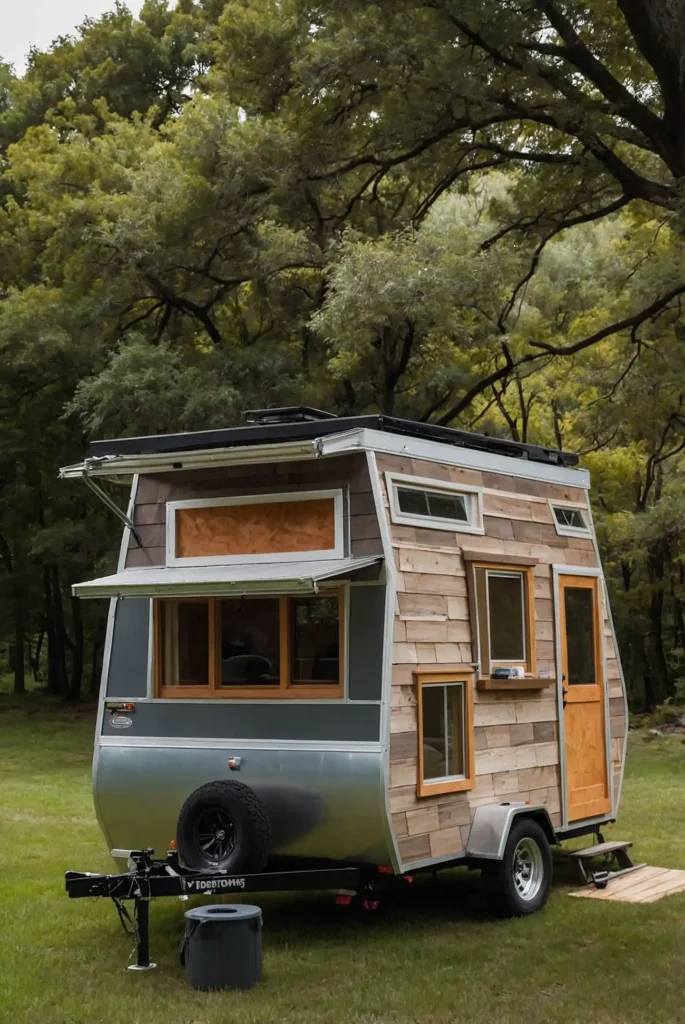
Create roof areas that raise for increased headroom and interior volume when parked.
You’ll gain substantial interior space while maintaining travel height requirements.
Include weatherproof sealing systems and secure locking mechanisms for both travel and camping configurations.
Plan for manual or powered operation.
Your interior space expands dramatically when parked while maintaining road-legal travel dimensions through innovative expandable roof design.
22: Create a Hammock Sleeping Area
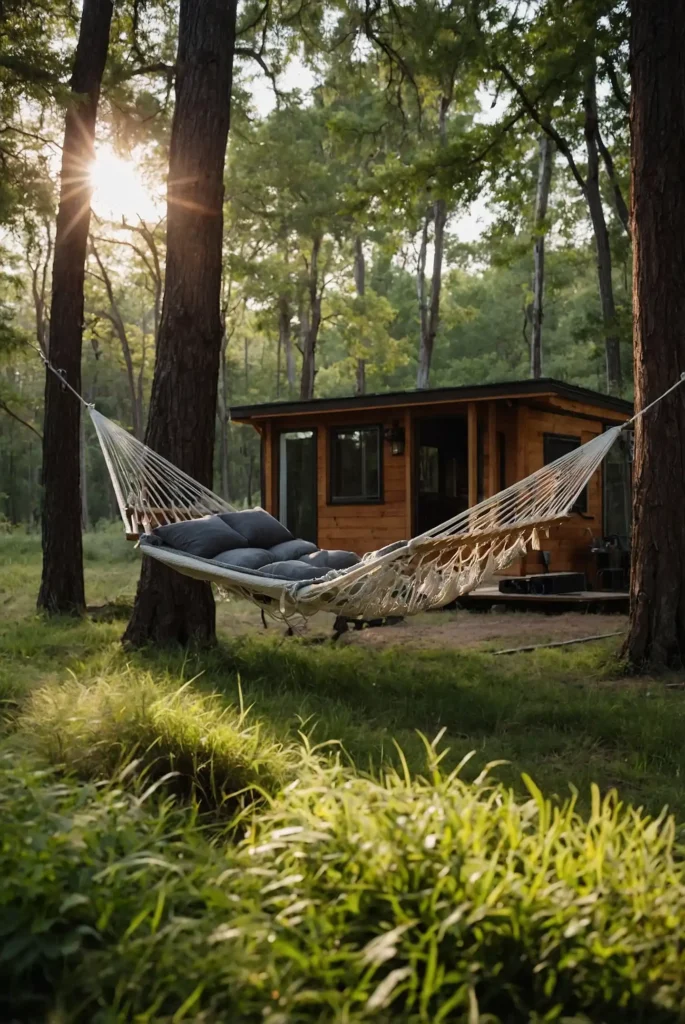
Install hammock systems that provide comfortable sleeping while freeing floor space for other activities during the day.
You’ll maximize space efficiency while maintaining comfortable rest areas.
Choose quality mounting points and hammocks designed for regular sleeping use. Include storage for bedding and personal items nearby.
Your sleeping arrangements become more flexible while conserving floor space through suspended beds that create open areas below.
23: Build a Convertible Office Space
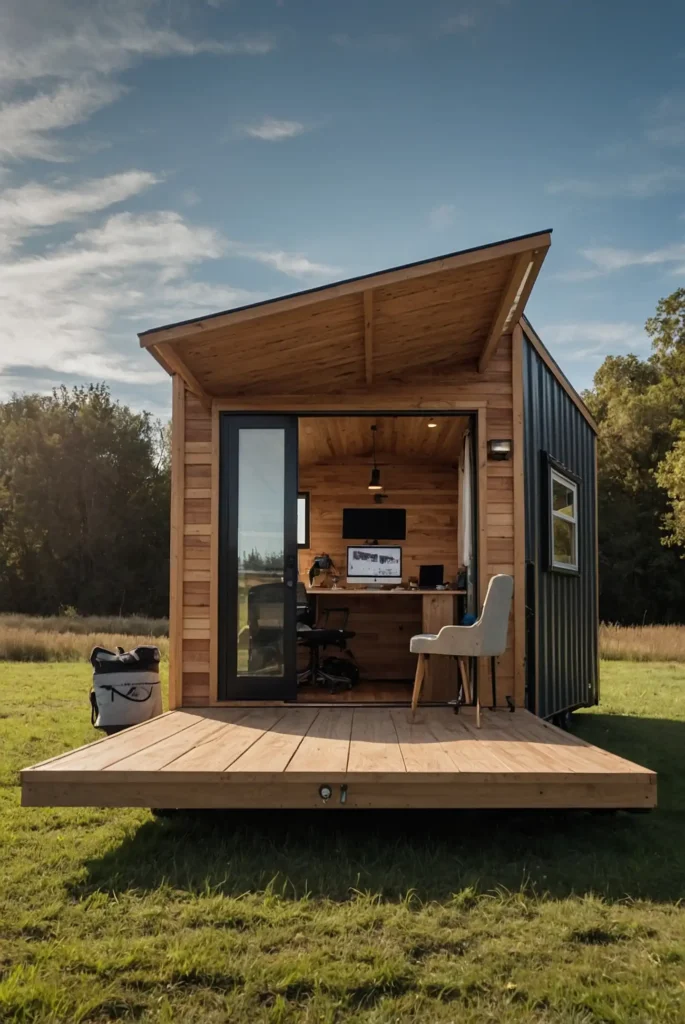
Design work areas that fold away completely when not in use while providing comfortable office functionality for remote work.
You’ll maintain productivity while preserving living space.
Include adequate lighting, power outlets, and ergonomic seating that supports extended work sessions.
Plan for equipment storage and organization.
Your camper becomes work-friendly while maintaining leisure comfort through convertible office spaces that adapt to different lifestyle needs.
24: Install a Retractable Screen Room
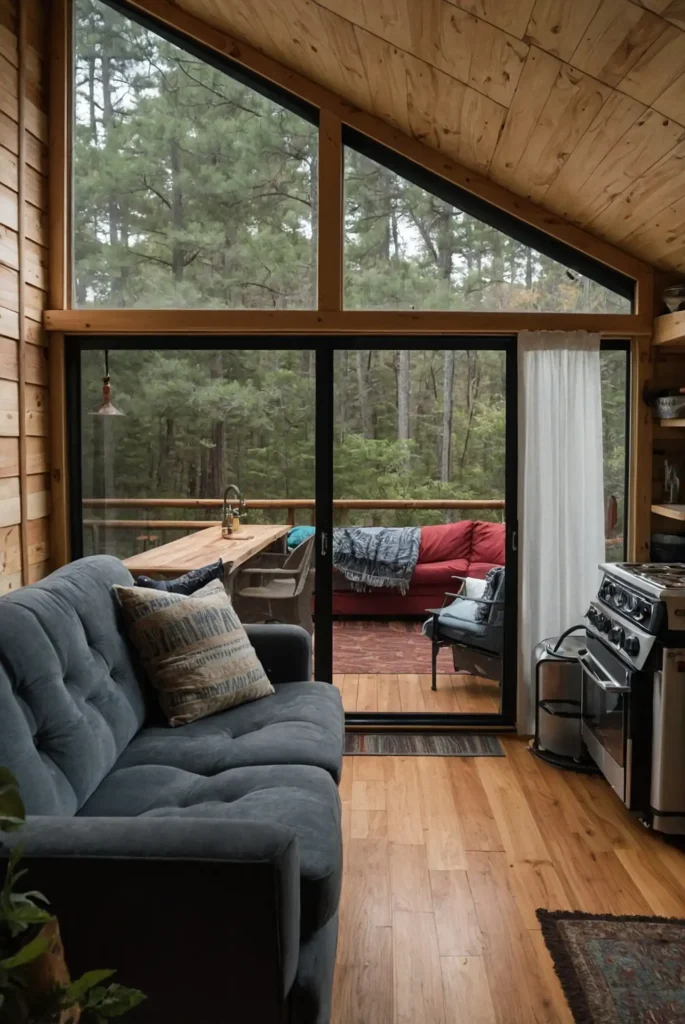
Add expandable screen enclosures that create bug-free outdoor living areas while maintaining views and airflow.
You’ll enjoy outdoor comfort without insect interference or weather concerns.
Choose lightweight materials and secure mounting systems that set up quickly.
Include weatherproof storage for screen components when traveling.
Your outdoor living space becomes more comfortable while providing protection from insects and light weather through expandable screen systems.
25: Design a Hidden Gun Safe Storage
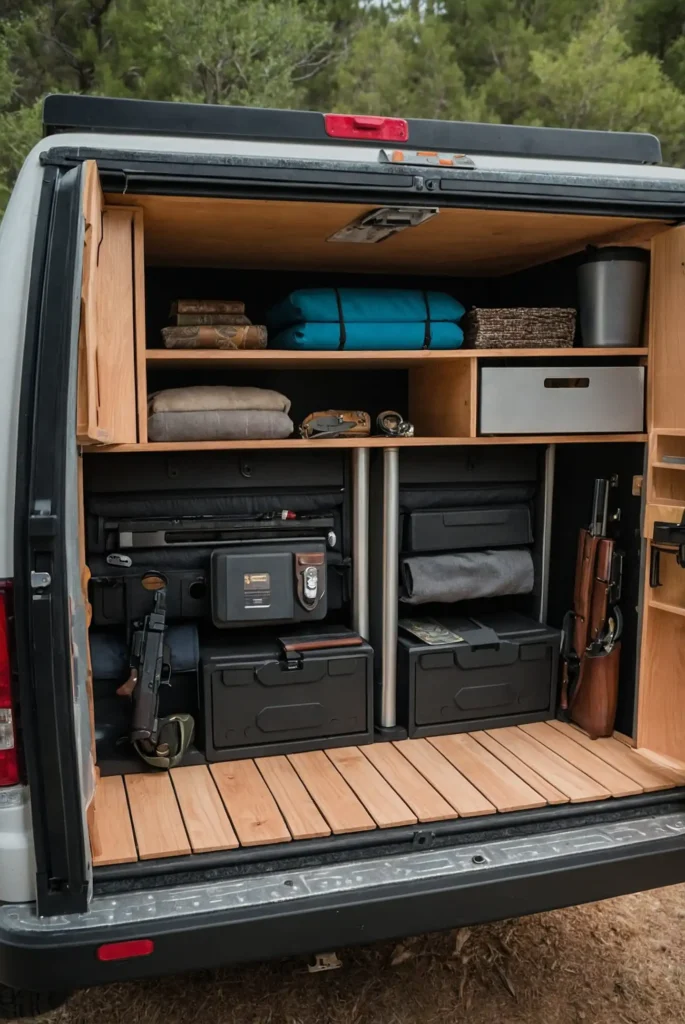
Create secure, concealed storage for firearms that meets legal requirements while maintaining interior aesthetics.
You’ll ensure safety and security while keeping protection accessible.
Include appropriate locking mechanisms and fire-resistant materials that meet local regulations.
Plan for quick access while maintaining concealment.
Your camper provides secure protection storage while maintaining legal compliance and safety through properly designed concealed security systems.
26: Create a Temperature Control System
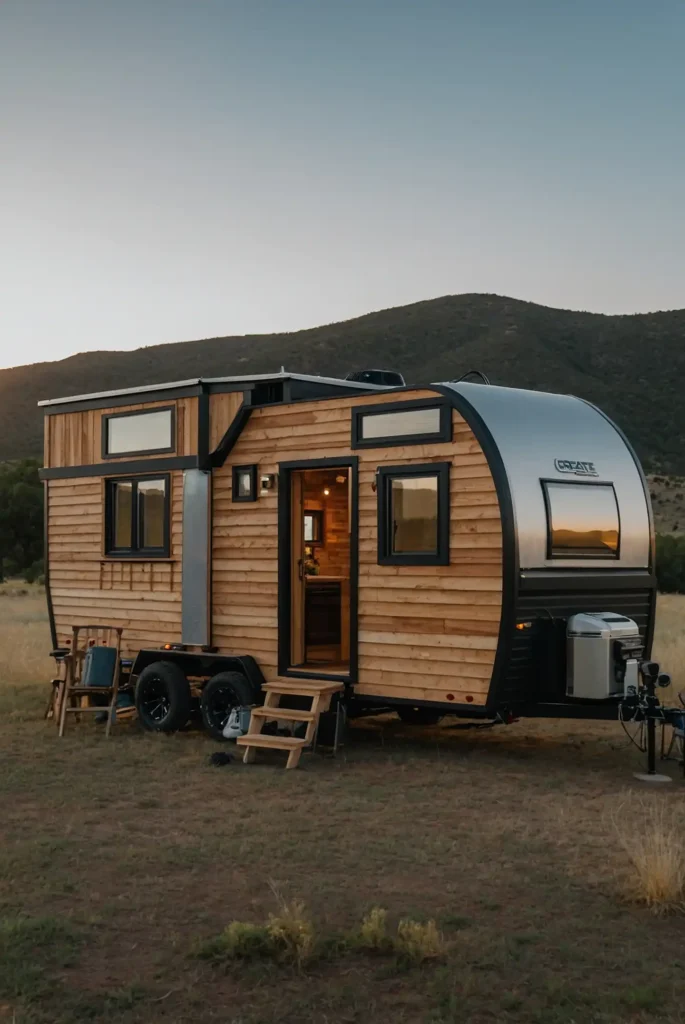
Install efficient heating and cooling systems that maintain comfort in various climates while conserving energy resources.
You’ll ensure year-round comfort regardless of destination weather.
Choose systems appropriate for your power generation capacity and insulation quality.
Include programmable controls and energy-efficient operation modes.
Your interior climate becomes controllable and comfortable while maintaining energy efficiency through properly sized and managed temperature control systems.
27: Build a Emergency Preparedness Center
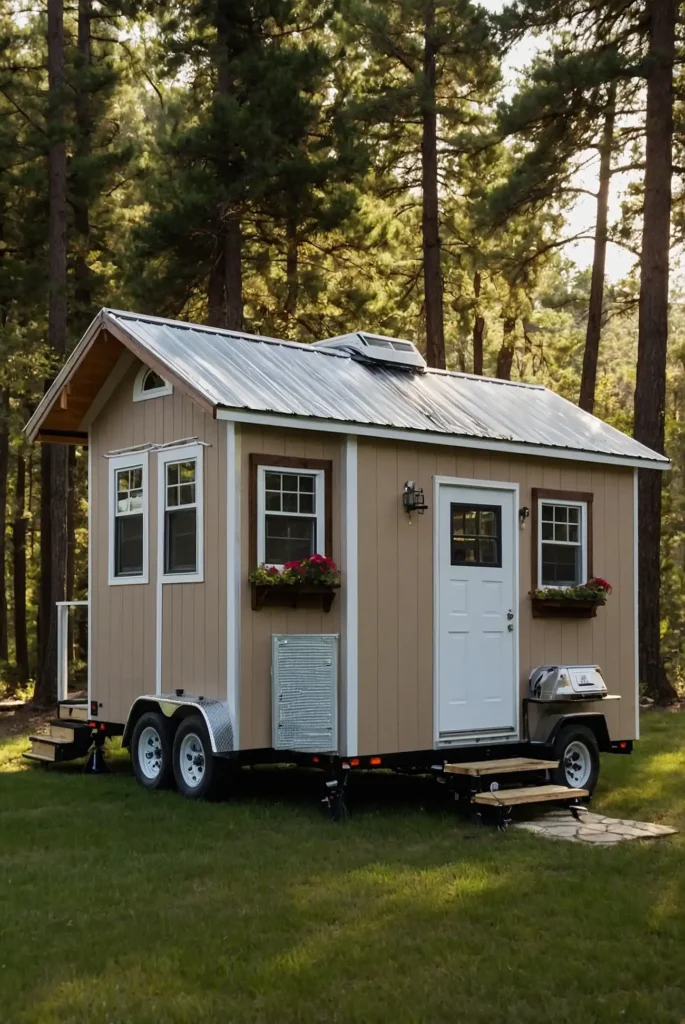
Design dedicated storage for emergency supplies, first aid, and communication equipment that ensures safety during remote adventures.
You’ll maintain peace of mind while exploring wilderness areas.
Include water purification, emergency food, medical supplies, and communication devices. Plan for regular inventory checks and supply rotation.
Your camper becomes a mobile safety center that supports extended wilderness adventures while providing emergency preparedness and security.
Conclusion
Design your perfect tiny house camper with creative solutions that maximize space, comfort, and adventure potential for ultimate mobile living.


